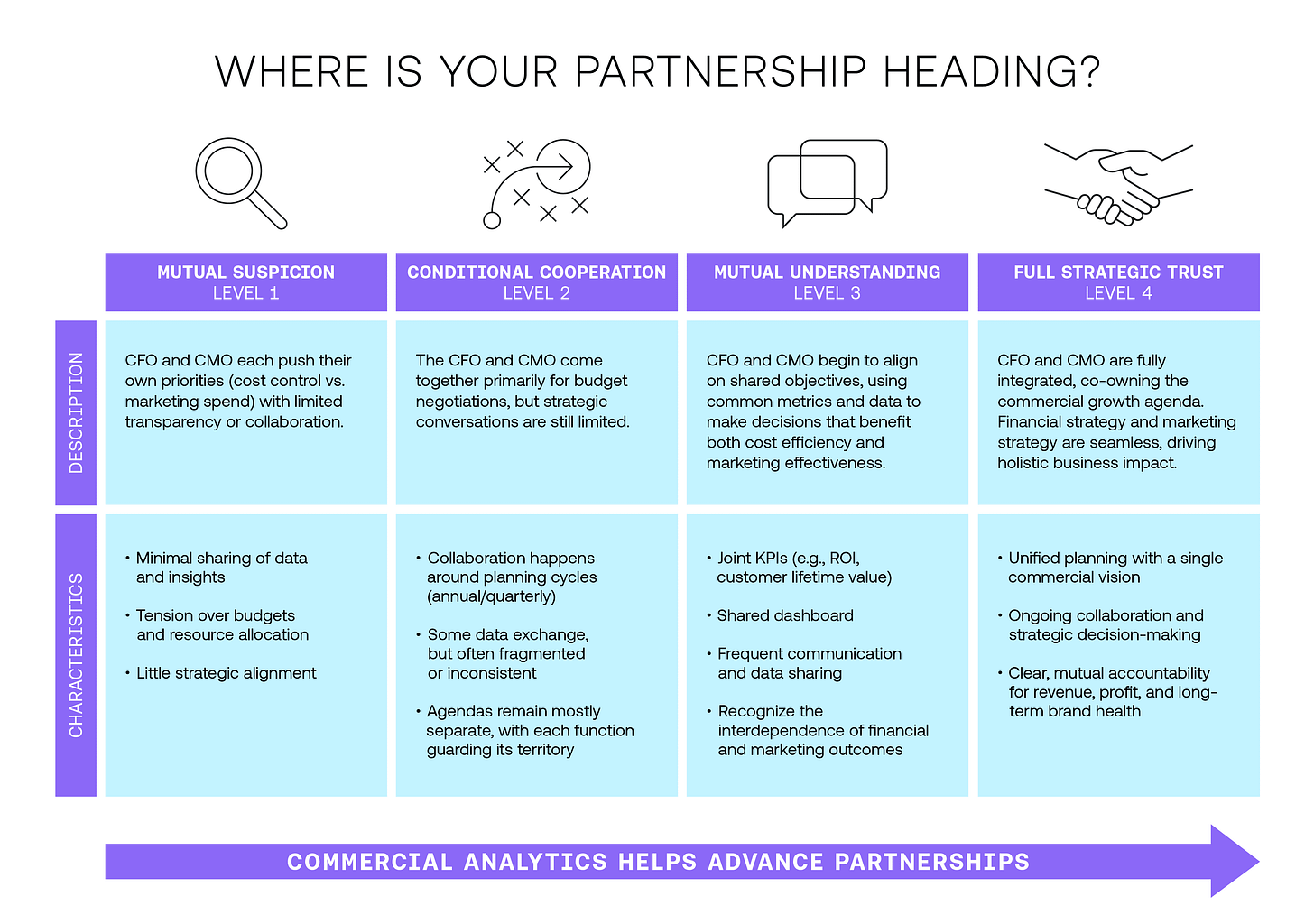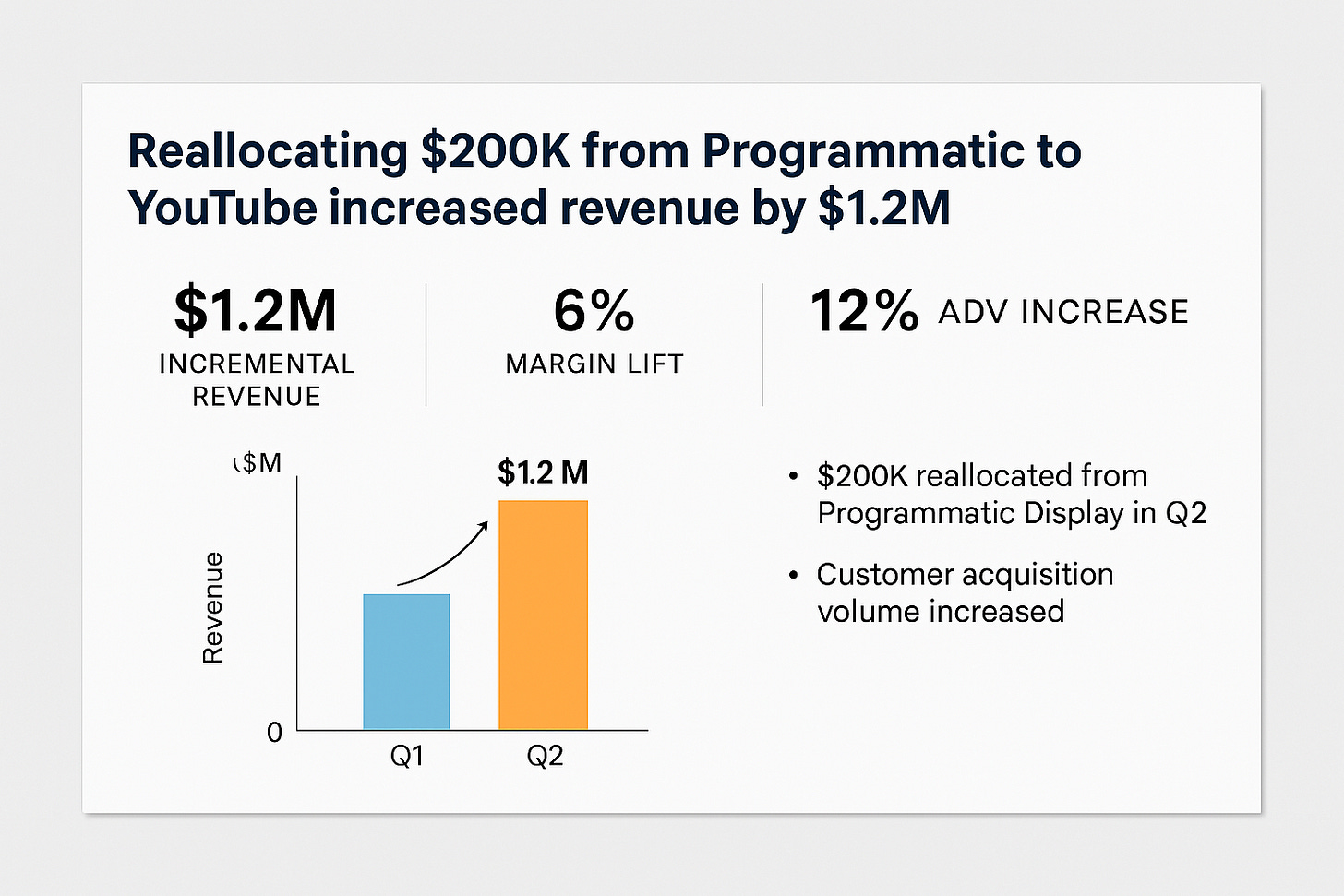From Dashboard to Boardroom: How to Serve Data Without Putting Your CFO to Sleep
Or worse - confuse them into cutting your budget.
There’s a moment every CMO dreads. You’re in the boardroom, slides cued up, data polished to perfection and then, the CFO squints. "What am I looking at?" they ask. Cue the internal scream.
If that’s ever been you (don’t worry, I’ve been there too), it’s time to reframe how we present data. Not just for clarity’s sake, but to actually drive decisions that move the business forward.
Because let’s face it, a great insight, poorly delivered, is like a chef plating caviar on a bin lid. You're not getting a Michelin star, you're getting side-eye.
1. Simplify, Don’t Dumb Down
Marketing data is complex - but our storytelling doesn’t have to be. Start by asking: What decision does this data support? If your chart doesn’t pass that test, it doesn’t belong in the deck. I use the one-slide rule for the C-suite. If I can’t boil the story down to one headline insight, one chart, and one recommendation, I’m not ready to present.
And please - ditch the jargon. No one outside marketing wants to hear about "programmatic reach lift curves by audience cluster cohorts." They want to know: is this campaign working, and should we scale it?
2. Speak CFO, Not Just CMO
This is where our Vice President and Commercial Analytics Ambassador, Jason McNellis’s latest piece had me nodding like a bobblehead. He breaks down the four stages of the CFO-CMO relationship, below - from siloed budget stand-offs to full-blown strategic harmony. (If you haven't read the full thing, go grab a coffee and skim it here. I promise it's worth it.)

The real kicker? Most CMO's are stuck somewhere between Level 1 and 2. Which means we're talking at finance, not with them.
To get to Level 3 or 4, you need shared language, shared metrics, and shared accountability. That starts with how we present.
3. Bring the Receipts
Anecdotes are cute. Results are convincing. When I talk to CFOs, I lean into comparative benchmarks.
"This channel delivered a 2.6x Return On Marketing Investment (ROMI) compared to our average 1.8x. We attribute that to sequencing content for late-funnel intent."
See? Tight. Measurable. Strategic. Want help finding that kind of stat? That’s where our Commercial Analytics tools come in.
As our APAC MD, Paul Sinkinson puts it on TikTok, below:
"We've built this tool, the ROI Genome, over 20 years. Hundreds of billions in media spend, across 70 countries. It's the largest set of generalisable findings on media anywhere in the world."

 Tiktok failed to load.
Tiktok failed to load.Enable 3rd party cookies or use another browser
If you're thinking, "Cool, but how does that help me in next Tuesday’s board meeting?" Here's how:
First, get clear on what decision your data supports.
Are you asking for more investment? Recommending a pivot? Justifying a past spend? Frame the story around business impact, not just marketing performance.
✅ Example: Instead of showing a blended ROMI across all channels, show how reallocating $200K from Programmatic Display to YouTube increased revenue by $1.2M and margin by 6%. Highlight ADV increase and customer acquisition volume. That’s commercial storytelling.
🚫 What not to do: Show impressions, reach, or engagement rate without any link to downstream business results. If it doesn’t connect to revenue, margin, or cost-efficiency - leave it out.
Then, nail the format.
One chart per ask. Lead with the business outcome (revenue/profit/volume), not the tactic. Include a headline insight and make sure your chart isn’t an eye test. Your goal? CFO nods, not squints.
Finally, start shifting your partnership up the maturity curve:
L1 → L2: Invite your finance lead to campaign post-mortems. Share topline results in revenue terms.
L2 → L3: Co-own a simple dashboard with joint KPIs like ROMI, CLV, or CAC.
L3 → L4: Use scenario modelling (like ROI Genome) to align on forward-looking investment decisions, not just retroactive justification.
Because if we want to be taken seriously as growth leaders, we need to speak in growth terms - profit, revenue, risk, return. And we need to do it with precision, not performance jargon. If you want to dive deeper check out the Whitepaper - United in Growth: Transforming Shareholder Value Through CFO-CMO Collaboration
4. Confidence is Contagious
Data is a power play but only if you wield it with conviction. So the next time you walk into that exec room, lead with insight. Frame the impact. Back it with benchmarks. And own the conversation like the commercial architect you are. Because marketing is a growth driver. But only if we learn to talk the talk and walk the walk.
The CMO Office posts go out weekly but for a more frequent dose of data and expertise follow us on LinkedIn and/or TikTok too.



